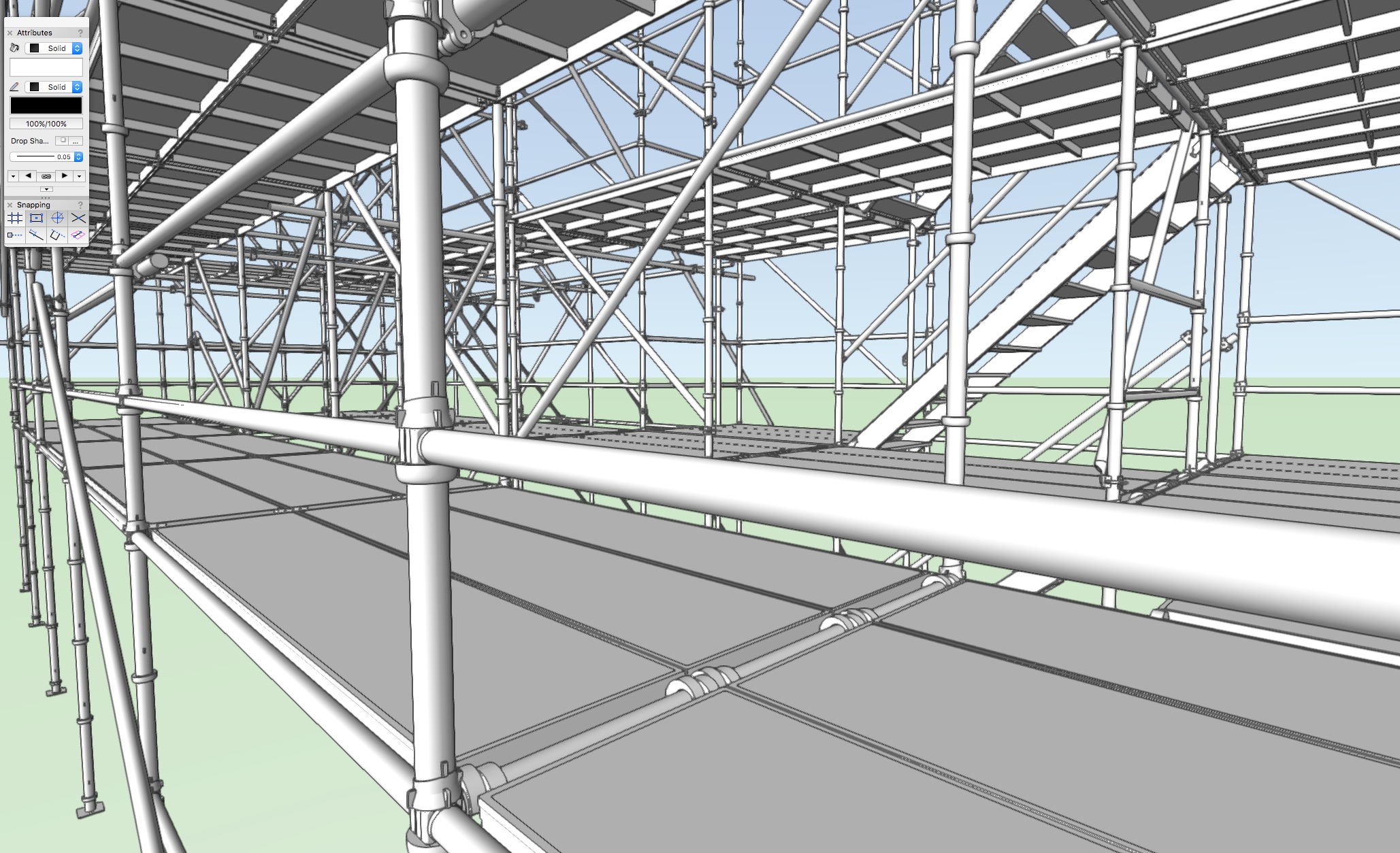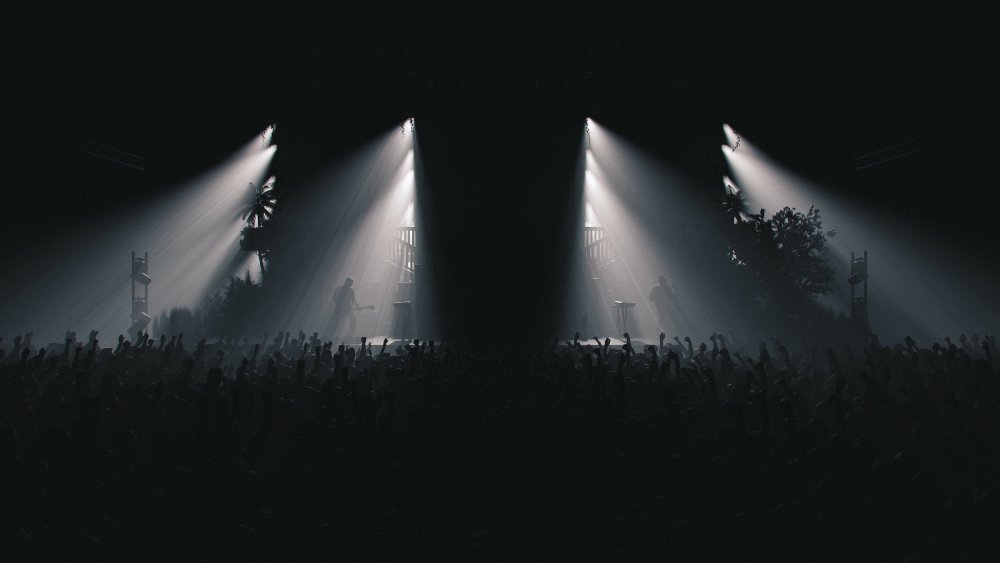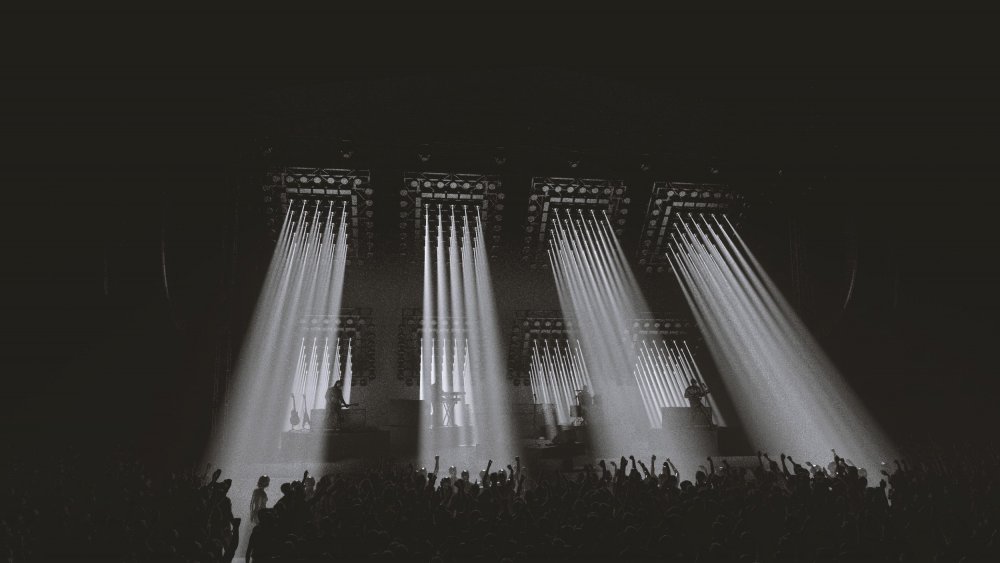-
Posts
542 -
Joined
-
Last visited
Content Type
Profiles
Forums
Events
Articles
Marionette
Store
Everything posted by EAlexander
-
I guess my question back is - how often are you doing volumetrics at at what amount (i.e. a beam here or there or a whole wall of moving lights)? My experience with Volumetrics in Corona was a no go for theatrical use. It worked pretty well for exterior sunlight situations or single god ray through the window. I found it all slow to clear up and was an all or nothing situation. Redshift for me was really easy once I watched a few videos and did a few experiments with putting the right sample counts in the right places. You can control it per light with Redshift which to me is huge as I want beams from some lights, but not all lights. Understanding that this is an additional cost - my recommendation would be to get started with Corona and just use the volumetrics from native Cinema for now. You can always add in Redshift later. If you felt strong about going with a GPU renderer, I'd tell you to go all in on Redshift, but since you lean towards Corona (and certainly have a machine that will rip through renders) - I'd start with Corona. Again - it's really a personal decision. Also - keep in mind - I spent YEARS doing volumtrics only in Photoshop as part of post production. It's more work, but you can still get good results. I bought the OPTICAL FLARES plug in for After effects and made a library of single beams of all shapes and sizes to pull from. e.
-
@Tanner Shelton yes, I make the Corona light a child of the lens and use an area light as a disc and control the spread/directionality. When I jump to Redshift, I swap out the Corona light for. Redshift light (using PSR reset). Thanks for the kind words! Corona has an amazing denoiser which really let's you cut down on render time. I render 16:9 at 2500 pixels wide and I don't think I've waited more then 8 or 10 minutes for any of my client renders unless the set is complicated or all glass :). I think I abuse the denoiser and under render, giving a film grain look that I like. I do a fair amount of color grading and exposure adjustment in post. Corona also let's you adjust exposure and bloom and glare before, during or even after the render. Look at light mix in Corona also - you can have full control of all light levels and colors after you render... It's amazing. e.
-
Also - both engine have free trials - so the only way to really know if to take them for a spin yourself.
-
@Tanner Shelton - here's some thoughts on this: 1. I put the lights into the vectorworks as much as possible - especially on sets or concerts where the lights are exposed and essentially part of the scenery. I want them in my sections and ground plans. Most of the major lighting companies have 3d models of there products online in CAD form - though they tend to be pretty simplified. For electrics that are overhead or far away, these will work just fine 90% of the time. I have a collection of hi poly 3D lights for Cinema that are a combination of purchased lights and ones I've built (mostly in Cinema). So if I need something close to camera or to be the hero of a shot - I'll use those. Since the units coming in from Vectorworks are Symbols - I can just replace the master symbol and the whole plot will update for me. My lights are built as nested children - something like this: Base>Yoke>Head>Lens. So If I rotate the yoke, for example - the head and lens move as expected. I'll put a luminous material on the lens so I get a glow from the head and with Bloom and Glare in Corona (or Redshift) - I can get a nice flare out of it if I want. See below for info on getting volumetric beams. You should take a look at the STAGE plug in for Cinema as it's built for controlling and manipulating movers. I don't use this, but it's a great product: https://hantmade.com/stage/ 2. Redshift and Corona are great engines and you can't really go wrong with either one. I prefer Corona for it's ease of use - Redshift has lots and lots of controls and lets you dial in the samples and clarity of each and every component - and while that's great - I want it to be simple. Corona has the least amount of sliders and functions of any engine I've used and thats it's superpower - you get great results simple and easy. Corona, however, doesn't handle Volumetrics well - so that is why I added Redshift. I have a complicated workflow where I'll render in Corona and then copy the whole file and switch to Redshift to render volumetrics. I put a black texture on everything and add Redshift lights to the lens of the lighting and dial in the beams and render - then I comp it all together in Photoshop. If you did it all in Redshift - you could simplify the process. Redshift seems to do okay with larger scenes. Corona is pretty bulletproof. I just prefer Corona - it's so easy and well integrated and it handles light really well. I feel like I know what to expect from the engine, so my work is not experimenting with the render engine - its just experimenting with lighting looks. Keep in mind - Corona is a CPU render engine and Redshift is a GPU render engine (specifically - only on Nvidia CUDA based cards) - so what hardware you have matters here. When I started with Corona, I was on Mac and had no choice. Now I am on Windows and have a machine with 2 graphics cards, so I can use either engine. Outside of hardware - it really just comes down to personal preference. But I would say the learning curve on Corona is about 1/3 of that of Redshift to get good looking stuff. Sorry to ramble on and on - I love talking about this stuff. Hope that helps some - happy to talk more about it. e.
-
I hear you! For the ballroom layout example you're showing - I feel like you could lay it all out with one chair symbol in about 15 minutes and be done with it. There are so many repeating seating sections, once you get the downstage most sections laid in, you just copy and paste. I usually drop in some rectangles to lay in my aisles first for reference - then delete them at the end. You could even lay out one side of the room and then mirror it - then knock out those areas at the bottom of the drawing for Tech. I usually have to knock a few out for ADA as well and if they are symbols, it's easy to do. I would make each seating section a group and put all those groups into one master group. As long as you don't have hidden stacked duplicates - going into groups and selecting all will give you accurate chair counts per section I make my chair symbols hybrids - so I'm getting the 2D and the 3D at the same time. If your machine is struggling during layout, you can change the 2D part of the hybrid to a simple rectangle while you do the layout work and then once you have it all dialed in - swap out the 2D part of the symbol for the real chair line work. e.
-
I just build all sections manual from a seat hybrid symbol everytime. It takes time, but less time then troubleshooting that tool.
-

3d Objects 'Clipping/Disappearing' When Zooming In
EAlexander replied to milezee's topic in General Discussion
I get this when there is something really really far away from the origin or my model is way off of 0,0. If you copy and paste that stool (don't just select all, since you might grab the offending geometry again) into a fresh file and make sure you're around world origin, does it still happen? -
Check out Align and Distribute with your objects preselected. Cmd/ctrl + =
-
Chaos Group also owns Corona Renderer which they ported to Archicad last year (as well as Cinema 4d). That might also be an avenue to explore with Chaos group. Just tossing that out there. Any and all external rendering options for VW would be welcome.
- 160 replies
-
- 1
-

-
- vray
- twinmotion
-
(and 2 more)
Tagged with:
-

changing scale of a design layer
EAlexander replied to Somayya Abu Hayeh's topic in General Discussion
Sometimes it is desirable to draw in a scale similar to your intended viewport scale to see and keep an eye on lineweights. Somayya Abu Hayeh: I don't know the exact answer to your question, but you should be able to hit Cmd/Ctr + 3 to center on all visible objects after you perform the rescale. Maybe try that. e. -

Tips for increasing rendering realism within vectorworks?
EAlexander replied to Tanner Shelton's topic in Rendering
Corona does have volumetrics, but to be frank, they aren't very good. More about exterior god rays and less about Sharpys in a ballroom or arena. This is what led me to Redshift which does amazing volumetrics. So my convoluted workflow is to do all the rendering with Corona, and then to jump over to Redshift to do volumetric passes that I then comp together in Photoshop. Attaching some volumetric pass examples from Redshift. TL;DR If volumetrics are important to you, you should look at Redshift. -

Tips for increasing rendering realism within vectorworks?
EAlexander replied to Tanner Shelton's topic in Rendering
No, all the texturing and lighting is happening in Cinema using Corona's material and lighting system. I only model in Vectorworks and move the raw geometry to Cinema before texturing, lighting or cameras. In VW I make my plans, sections and elevations and in Cinema I do the rendering. -

Tips for increasing rendering realism within vectorworks?
EAlexander replied to Tanner Shelton's topic in Rendering
Okay, that all makes sense. I don't know what is happening with soft goods for you, I believe they have a texture applied upon creation, so you'd need to be tweaking that. I don't have any examples with Renderworks, but if you look at my website, everything there is built with Vectorworks and rendered with Cinema using Corona or Redshift. www.evanalexander.com -
You'll have to try them out. Some will work if you just add a Tag from that engine, others would require you to replace the whole light. Focus on the engine that speaks to you most in overall workflow once you try a few out. Corona was not what I was looking for, but it spoke to me right out of the gate with ease of use, integration with Cinema and the way that it handles light (the best, in my eyes). Redshift and Octane have given me great stuff as well.
-
Hi, Render time should decrease with Physical a bit, but mostly your time in setting up lighting and doing test renders will decrease dramatically, so this is where you will mostly see the benefits. Moving to a third party render engine will save you tons of render time right out of the gate. All the third party render engines for cinema use their own materials, cameras and lighting systems. A lot of them CAN render native materials and lights, but not as well or efficiently as using that engines native systems. I know Corona and Redshift have automated conversions for materials - these still need some tweaking, but it gets you close to where you want to be automagically. Since I switched to Cinema for my workflow - I don't do any cameras, materials or lighting within VW - but that is just me. Others might have other workflows. See what Grant says and also talk to @Wesley Burrows who does a VW to Cinema with Corona workflow similar to mine. I know Grant is trying out Corona as well. GPU rendering on your 2080ti will blow your current rendertimes out of the water. Also - most of these engines have free trials - so download some and try them out. e.
-

Tips for increasing rendering realism within vectorworks?
EAlexander replied to Tanner Shelton's topic in Rendering
This is a really good start - I think it's mostly lighting that needs work. Here's a few things that jump out at me on this render: The chairs are hot, but no clear direction or motivation for the lighting - and no shadows for anything, which feels odd. Screen isn't giving off any ambient light. If you put white chairs in front of a LED screen with rainbow streaks on it - the room and chairs would pick up that color i.e. bounces light. Also - white feels too white/hot. I use 70-80% grey as my "white" for objects. Camera lensing is pretty extreme giving you a Cezanne like perspective. Camera should be lower. Blacks are too black. Are you setting your black color to pure black? This is unrealistic and keeps any light from reflecting or bouncing off these surfaces - even matte black. I use 3-5% grey for "Black". So the stage apron skirt and the masking left and right feels like a black hole. When I do shots like this, I try to let the screen be the main lighting source in the room. I'm sure you've been in a ballroom with a 40' wide LED screen and had to shield your eyes, right? Ceiling looks good since you are getting gradients of value from the cove lighting. Photoshop paint over could push this along a lot to balance the lighting and then make it pop. Hope that helps some! Keep going! e. -
If you just want to view it in section, you can go into OPEN GL and then turn on the clip cube for a live section view.
-
I think my initial post comes across as a bit harsh on VW - I love VW and I use it every day. I think VW and Cinema together are a great combination. VW frustrates me and I stay about a year behind development for stability - but all software frustrates me to some degree. Renderworks has improved a lot and I do open GL and realistic white interior renders of a lot of our work for clients. I appreciate the work that goes into it.
-
Thanks very much! If you already have experience with Blender and Maya, I think you'll find Cinema very easy to pick up. The workflow with Vectorworks isn't perfect, but it is pretty great. Let me know how else I can help. e.
-
I have so many thoughts about this, but I will try to keep it top line: Lighting - the entire lighting system is miles ahead in Cinema. Just the ability to move and point lights via gimbal alone makes this much faster to light scenes. Object management - the ability to see the hierarchy of your whole scene and manipulate it via a manager as well as per object in the scene makes the workflow much faster. Materials - I think the material system in VW is clunky and hard to use. Cinemas material system is miles ahead in ease of use and realism. Object handling - I can rotate millions and millions of polys in Cinema without it even blinking, where the same scene in VW is slow to refresh. Add on render engine support. I haven't used the built in render engines in Cinema in about 5 years. I use Corona as my main render engine and use Redshift for all of my volumetrics. Once you go to GPU rendering and get real time feedback on lighting and material creation, you cannot go back. That said - Corona is CPU based, but still offers a real time preview window to build your scenes with. Redshift, Octane, Arnold, Unreal - we are rich with render options these days. Render Speed - it just cooks faster all around. Cloner tool - think live, parametric duplicate array Parametric workflow - things like Extrude along path and sweeps are run by splines and generators in Cinema - keeping them as objects you can manipulate and update in real time. Cameras - there is no way to even compare the two. Cameras in Cinema are so much easier to use and more physically accurate. so many more....... Yes - it is technically the same render engine, but if you put a Ferrari engine into a Volkswagon, you are still sitting in a VW. If you just run vanilla Cinema, your workflow has improved, but when you start to add some plug ins and render engines, things go to apples and oranges very quickly. Look at Poliigon.com for example - with their plugin, you can add any of their materials to a scene with three clicks with all maps in the right place. I use VW as a modeler and to generate sheets and elevations from - but I do all the materials, lighting, camera work and rendering in Cinema. If you look at my website - everything there is build this way. Happy to answer more specific questions. e.
-
I'm still on 2019 SP 3 and I haven't noticed a change, but I'll look for it when I do upgrade.
-

Stationery objects/symbols
EAlexander replied to BGD's question in Wishlist - Feature and Content Requests
Do you mean pictures of those things? If so - you can go to FILE>IMPORT>IMAGE FILE and you can import JPEG or PNG files. These can then be scaled, but they will all be just images/pictures i.e. they will have a white square or rectangular background. If you mean 2D or 3D objects, then, yes, you can import them from other programs (Sketchup, DWG, .OBJ, .3DS, etc.) or make them in VW. Does that help?- 1 reply
-
- 1
-





